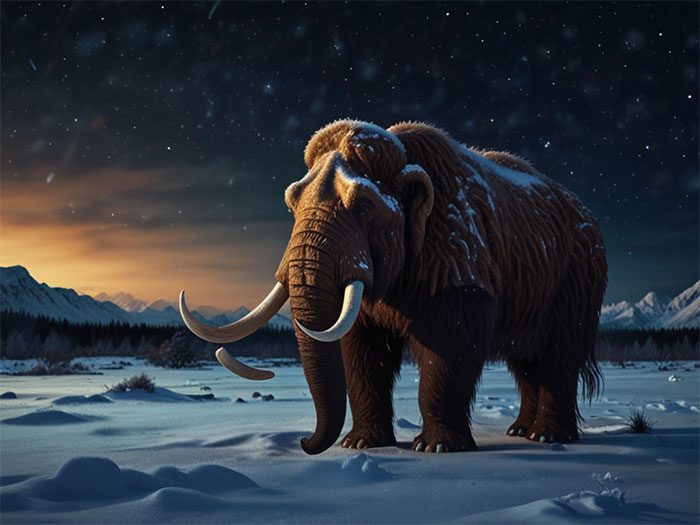Clues from 50 locations around the world suggest that the Earth encountered a dangerous cosmic object at the very moment woolly mammoths began to disappear.
Woolly Mammoth (Mammuthus primigenius) once thrived across the globe for hundreds of thousands of years before their population suddenly declined around 13,000 years ago, ultimately leading to extinction a few thousand years later.
While overhunting by ancient humans may have been one of the causes, there seems to be something far more terrifying lurking in the annals of history.

Woolly Mammoth population decline around 13,000 years ago – (Image AI: Anh Thư).
Now, an unusual coincidence has been discovered in sediments from 50 sites across the globe, including North and South America, Europe, Asia, and Greenland’s ice sheets…
In ice cores extracted from the permanently frozen regions of Greenland, micro-particles related to widespread fires in the atmosphere at around 12,800 years ago have been found.
In some sediment samples from other contemporaneous locations, such as Syria and three distinct sites in North America, unusually high levels of platinum can be detected.
Some samples from other areas contain tiny iron spheres known as spherules.
This indicates that a previously unrecorded event occurred around 12,800 years ago with global implications.
This event is linked to an extraterrestrial impact, as the unusually high platinum levels serve as evidence of cosmic objects, such as comets.
The object must have exploded violently in the atmosphere, causing a massive fireball and shockwaves strong enough to create extreme pressure, leading to the formation of spherules.
It is also possible, more catastrophically, that the object collided with Earth, scattering burning debris everywhere and creating spherules on-site.
According to co-author Christopher Moore from the University of South Carolina, the hypothesis of a comet exploding in the atmosphere seems more plausible as scientists have yet to find any impact craters that fit the scenario.
Either way, it appears the Earth was struck by a comet during this period. Not only did it leave behind unusual remnants, but this extraterrestrial attacker could also have caused severe climate changes. This may have devastated the mammoth’s habitat, explaining the sudden population decline.
Supporting this argument is the presence of quartz grains fractured by shock within the Younger Dryas boundary layer across a range of other sites throughout North America.
The results, recently published in the journal Airbursts and Cratering Impacts, serve as a warning about how dangerous extraterrestrial attackers can be.
Such impacts have evidently altered the course of life on Earth multiple times, and clearly, the planetary defense missions that space agencies are pursuing are essential for safeguarding our current civilization.




















































